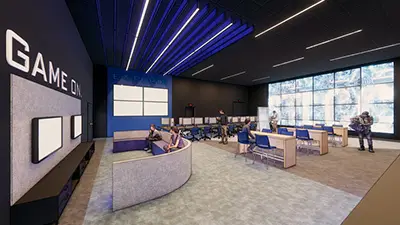STLCC experts weigh in on the dangers
By: Mary Wilson, Opinions Editor
The Brain Injury Association of Missouri (BIA-MO) website claims that the age groups at highest risk for a brain injury are” toddlers, adolescents, young adults, and individuals 65 and older.” For ages ve to 24, motor vehicle accidents are the leading cause.
[Students] need to avoid risky behaviors…like distracted driving… not texting in your car, not talking on the phone in your car, or using hands- free if you’re going to talk in your car,” Cindy Hartwig, Professor and Nursing Program Coordinator, said.
Maureen Cunningham, Executive Director of the Brain Injury Association of Missouri, said that symptoms fall into four categories: cognitive, physical abilities, emotional and psychological, and sensory and perception.
According to the BIA-MO website, symptoms include everything from problems with attention and concentration and organization, to seizures and headaches, to di culties with depth perception and balance, to anxiety and depression.“It may take somebody longer to retain information. [They] may need to repeat things, especially in academic situations or conversations,” Cunningham said.

Should an individual experience a traumatic brain injury, Hartwig said they should be seen by a medical professional. “If [somebody] totally lost consciousness, they need to go to the Emergency Department.”
“There could be long term complications, absolutely,” Hartwig added. “We have a lot of people who are disabled from traumatic brain injuries. [They] can also be mild and be just ne. [It] depends on the severity of the injury.”
The BIA-MO website says that in
Missouri, there are 118,000 individuals “living with long-term e ects.”
Hartwig said that “[In sports] you need to make sure you’re wearing protective gear when playing any sport, including skiing and sledding.”
“The important thing to think about is, that even if it’s a minor traumatic brain injury, that the brain is going to be in a fragile state for several months, so they really need to be careful…to make sure they’re not injured again,” said Hartwig.
The Brain Injury Association of Missouri also directly helps individuals with the emotional/social side of brain injury. “We help individuals adjust to life with their brain injuries… We help individuals know they’re not alone as they’re facing many challenges,” Cunningham said. “We have support groups, camps for adults with brain injuries, [and] seminars for professionals, family and survivors.”
“Once you’ve seen one brain injury, you’ve seen one brain injury. Every brain is di erent, every person is di erent,” said Cunningham, referencing a saying in the brain injury community. “It’s the family history, it’s the health of the brain itself. Younger brains take longer to recover, but they’re more resilient.”
Cunningham added that “With sports related concussions, youth take longer to return to play, return to school, than adults. It also depends on the care that is received at the time of the brain injury. If there’s a long delay in trauma care…..it can prolong the impact on life.”
“Prevention is the only cure for brain injury,” said Cunningham.
For more resources and information, visit the Brain Injury Association of Missouri’s website at www.biamo.org.











